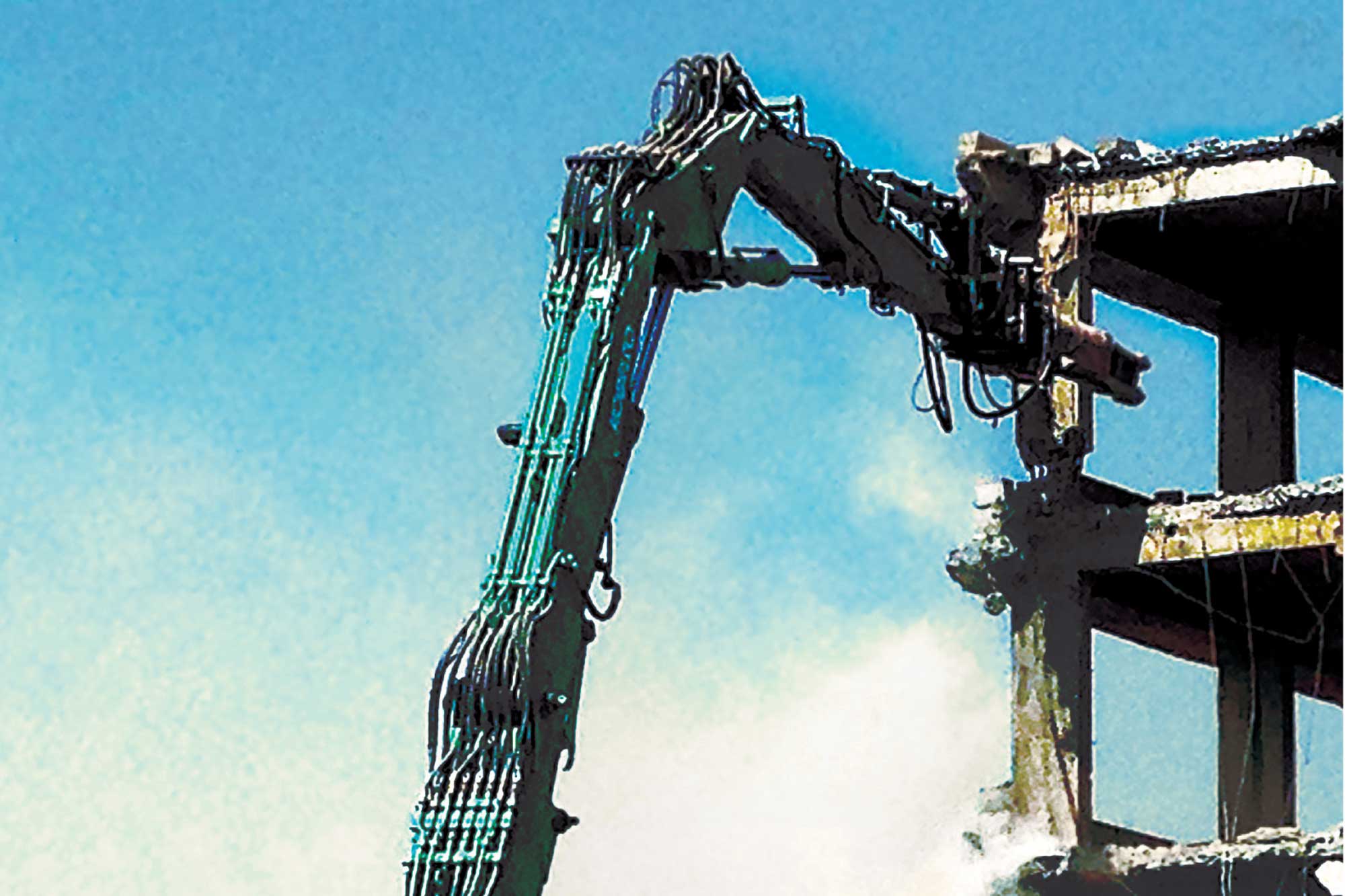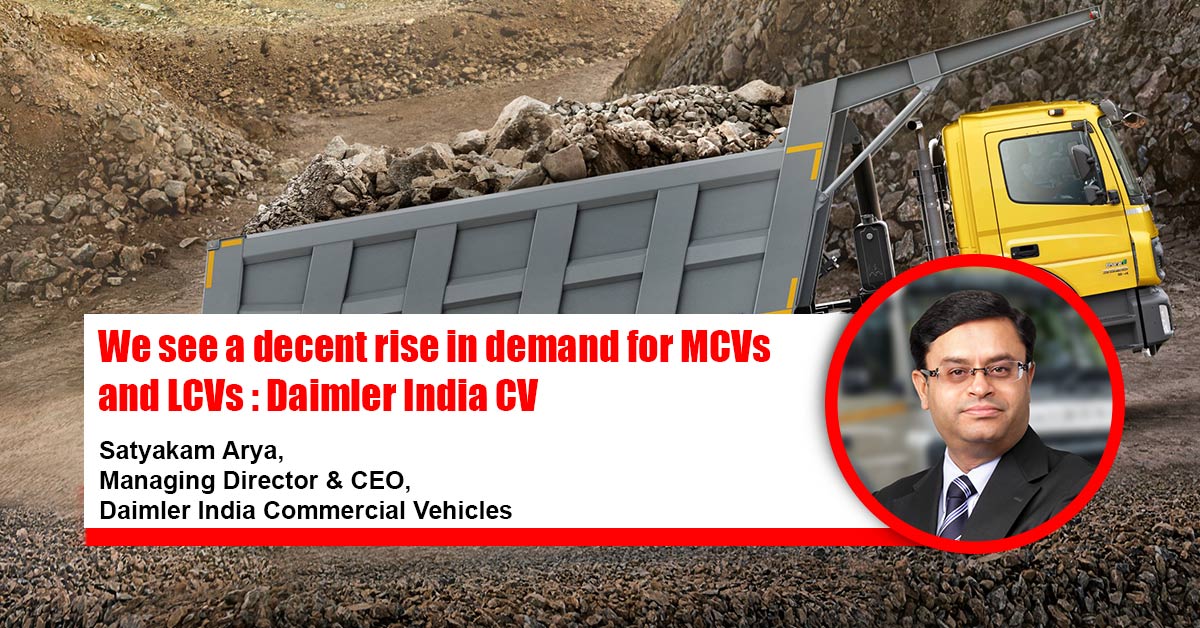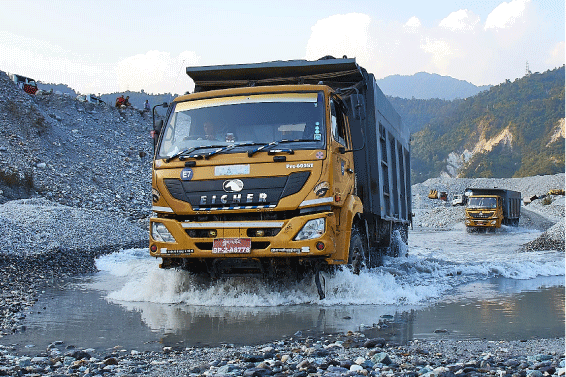10 Demolition Technologies
By Edit Team | April 14, 2016 5:54 am SHARE

A comprehensive analysis on various technologies and methods to demolish or deconstruct safely
In India demolition concept was popular in last 10 to 15 years generally in metro cities where availability of land is less especially in congested and popular area, where old building or structures demolish or deconstruct to develop new buildings in the same place to get extra height or spread the present construction to get more area or more facilities. These are also applicable at railways to inner city areas, in any chemical factories, laboratories, nuclear power stations, defence where hazardous materials such as lead, radiological, chemical and biological contamination, where health and safety, security, noise, dust, traffic and vibration have to be very carefully managed. At International level, technologies to demolish or deconstruct are very advanced compared to India as tallest buildings and structures started to get constructed in very large scale in last 15 years in India.
The demolition industry is steadily transforming in recent years but it is still in its early stages in India. However, with the sporadic growth in infrastructure and construction sector, there has been a surge in redevelopment projects of late. This will provide impetus to the demolition market. Hitherto customers were using conventional methods of demolition work but increasing demand and pressure of fast execution has compelled contractors to seek equipment that can deliver better results. Today, demolition attachments like crushers, pulverisers, crusher buckets, high performance breakers, vibro rippers and the like are much in demand.
Small structures may be demolished manually or by hydraulic equipment like crane, elevated platforms, excavator, bulldozer etc. Hydraulic excavators may be used to topple one or two storey buildings by an undermining process. The strategy is to undermine the building while controlling the manner and direction in which it falls.
1. Wrecking Ball technique
This technique is especially effective against masonry, but is less easily controlled and often less efficient and it is also used to demolish the structure down to a certain manageable height.
2. High reach demolition excavators
It is more often used for tall buildings where explosive demolition is not appropriate or possible. Excavators with shear attachments are typically used to dismantle steel structural elements. Hydraulic hammers are often used for concrete structures and concrete processing attachments are used to crush concrete to a manageable size, and to remove reinforcing steel. “For tall concrete buildings, where neither explosive nor high reach demolition with an excavator is safe or practical, the ‘inside-out’ method is used, whereby remotely operated mini-excavators demolish the building from the inside, whilst maintaining the outer walls of the building as a scaffolding, as each floor is demolished,” explains Pankaj Udeshi, Deputy Manager Procurement, Supreme Infrastructure India Ltd.
3. Stop Motion Technique
The Japanese company Kajima Construction has developed a new method of demolishing buildings which involves using computer-controlled hydraulic jacks to support the bottom floor as the supporting columns are removed. The floor is lowered and this process is repeated for each floor. This technique is safer and more environment friendly, and is useful in areas of high population density.
4. Building Implosion
“The term implosion is something of a misnomer. In fact, the technique involves strategically placing explosive charges to remove a building’s support structure so that it collapses on itself, causing as little damage to its surroundings as possible and an expert can ensure that the structure falls into its own footprint, so as not to damage neighboring structures. This is essential for tall structures in dense urban areas. Any error can be disastrous, however, and some demolitions have failed, severely damaging neighboring structures. However, it can be dangerous and is only used as a last resort when other methods are impractical or too costly,” says Udeshi.
5. High reach crusher demolition method
In India with continued urbanisation and rising safety awareness, crusher demolition method is coming to spread out mainly in metro-city like Mumbai and Chennai.
“As far as our research, almost 10 units of imported used high reach demolition machines are existing in India from 30 tonnage class to 60 tonnage class. KOBELCO is the only one manufacturer which introduces brand new high reach demolition specialised machine in India. We currently offer 2 models, SK350DLC and SK480DLC, whose maximum working height is 20.5m and 26.3m which equals to 5th Floor and 7th Floor. We understand SK350DLC covers volume zone of demands in India. SK480DLC can correspond to future demands and special requirement like demolition against big factory or plants,” says Haruki Nishihara, Manager – Planning Department, Kobelco Construction Equipment India Pvt Ltd.
Merits of crusher demolition method are as follows:
• Efficient work
• Wide range of demolition objects from pillar, joist, floor, wall to underground foundation
• Possible to cut reinforcing steel and iron frame
• Good mobility as it moves on hydraulic excavator
• Less pollution
• Less danger as it decreases the work at a height
• Shorter work period as it doesn’t require much previous arrangement like setting a support to bear the machine weight on the floor.
Demerits of crusher demolition method are as follows:
• Falling object from a height arises
• The fear of machine tipping over due to rough operation or bad ground condition.
“To cope with the demerits, KOBELCO machines are equipped with boom – holding valves and debris guard on the attachment and tip-over warning device with alert function by which computer constantly monitors machine balance. Not only these items but also other many safety devices are installed on KOBELCO demolition machine like special demolition cab, self-lubricating system for attachment pins and water sprinkler,” says Nishihara.
6. Eco-friendly and low fuel consumption machines
The key to better performance in demolition is really down to stronger and more durable machinery. Specifically that means the use of high tensile steel in boom designs and adequate counterweight for better stability. “Volvo engines are well-known for their high torque at low RPM, along with low fuel consumption, emissions and lower noise level. Latest hydraulics system and latest engines also allow the latest generation of demolition equipment to deliver better operational abilities and the hydraulic dampening mounted in cabin reduces shock and vibration levels along with sound absorption lining to lower the noise levels inside the cab and thus improving the working environment for the operator,” says Dimitrov Krishnan, Vice President and Head of Volvo CE in India.
There are a number of factors that contribute to flexible operation, high performance and low maintenance but all are fundamentally linked to ensuring that the design and manufacture of equipment is of the very highest level.
“The Volvo excavators are powered by fuel efficient engine which are very well harmonised with hydraulics giving the best fuel efficiency and lowering the maintenance cost in the competition world,” states Krishnan.
There are growing demands for construction machinery to be more eco- friendly as issues such as global warming and air pollution in emerging countries draw more attention.
“Hitachi Construction Machinery Group is continuously working to introduce the latest technologies including motorisation technology that contributes to reducing environmental impact and electronic control technology, which is indispensable for developing advance products and improving the operability and safety of products,” states Vijay Kalantri, Chairman and Managing Director, Dighi Port Ltd.
7. Good performance and low maintenance machines
Demolition is one of the most demanding applications, in terms of working environment. By its very nature it requires equipment to work in hazardous and dusty locations with uneven ground conditions and machines are often working towards the upper limits of their abilities.
“On our EC380D HR and EC480D HR (High Reach) excavators, which are the most popular for demolition applications in India, we offer better performance and simpler maintenance in a number of ways. First the units have arm wear strips in their high tensile steel booms, which provide extra protection and durability. There’s also a linkage yoke reinforcement that incorporates a support bar for additional strength and durability, when fitted with demolition attachments, the High Reach Demolition attachment at 23m and 28m needs high quality reliable steel pipings (Volvo X1 and X3 pipings) which can take the load and external impacts as well and gives best performance without any breakdown in tough breaking application,” says Krishnan.
Service is easier through a design that includes oil bath pre-cleaner to protect the engine and reduce maintenance cost in severely dusty environment. The equipment is also fitted with machine filters that are grouped together and accessible from ground level.
Krishnan adds, “We are very focused on innovation that adds value for our customers. For each technological advancement we include in a design, we assess factors such as the cost, maintenance and performance of that feature. For example, we might develop a new design that improves performance on the job site for customers and also to meet the site requirement. But if it adds too much cost to make the machine profitable for owners; or if it requires too much additional maintenance then we won’t include it.”
8. Machine controlled Technologies
Machine controlled technologies are becoming easier to operate and integrate across fleets every day. “CASE India provides advanced transformative technology that aids in completing a project faster and more profitably. With that comes increased return on investment (ROI) and a greater ability to positively affect the project work. CASE India offers a complete range of hydraulic rock breakers for skid-steer loaders as well as loaders backhoes. This range is constantly reviewed and updated to fit to the latest CASE machines,” says Shalabh Chaturvedi, Head Marketing, CASE India.
CASE India ensures state-of-the-art technology and optimum product support across their equipment range. “CASE breakers operate at a frequency often more than double the blows per minute than most competitor models, providing CASE breakers with higher productivity, especially in severe applications. This product provides greater oil flow range than many competitors’ breakers, allowing for simple installations and high productivity, without risk of heat problems. The CASE installation accessory options have been designed to allow multi-carrier breaker applications, supported by CASE operators. The breaker can be fitted without modification to all CASE machines,” says Chaturvedi.
CASE India sells and supports a full line of construction equipment around the world with equipment and aftermarket support, industry-leading warranties and flexible financing.
9. Using milling machines
With liberty to use new technology and construction methodology practiced work wide Indian infra sector has become conscious to reuse demolished materials at site.
“Demolition of existing rigid and flexible pavement on road awarded for rehabilitation has been quite frequent due to various reasons like change in level, approaches to flyovers etc. Conventionally the pavement used to be demobilised using hydraulic breakers where material recovered was of no use and was a dumping hazard due to shape it was recovered and the bitumen content could not be used in that form. Currently in the new technology the roads are not demolished rather recovered by milling it by milling machines which is latest technology machine,” says Ratan Lal Kashyap, Sr. Vice President –Procurement, G R Infraprojects Ltd.
With the help of milling machine the material milled from road called as RAP (Reclaimed Asphalt Pavement) which has aggregate in desired gradation and Bitumen content in it which can be reused in Asphalt road by processing in the Hotmix plant having RAP processing facility. This technology is getting good acceptance in the industry as this helps conserve the environment by reuse.
10. Machines with special features
As India is progressing with new projects and new avenues are opening up, the demand for different applications required in material handling and demolition is increasing. Increasing need is felt for technologically advanced demolition equipment with innovative design in construction and mining industries of today. With the construction activities moving at a high pace, there is a need to develop some of the most efficient equipment and attachments.
“Demolition work involves a lot of falling dust, metal and concrete. In order to ensure the safety of operators, demolition machineries must be built with a number of special features. These special features include headgears and front guards to protect the cabin from falling debris and undercarriage guards to prevent metal from getting caught in the crawler. Machines have to be extra- tough in order to break such solidly- built structures, necessitating advanced engineering,” explains Kalantri
It is imperative to build a professional and competent dealer network with specially trained technicians located around the country providing professional service no matter where the business is located. Sustained commitment to continually provide training, support and knowledge to dealers is essential to ensure that equipment is maintained to its optimum performance level at all times.
“Major players Atlas Copco, JCB India, Volvo Construction Equipment, Dozco India have built significant capabilities and are catering to the industry with considerable success. Yet the industry’s potential remains untapped. As the industry is progressing with new projects and new avenues are opening up, the demand for different applications required in material handling and demolition is increasing. The industry must be ready to face the new challenges and meet the growing demands in the emerging construction scenario,” observes Kalantri.
“Before doing any style of demolition or deconstructions, proper study or observation of structures shall be requiring with proper approvals, all required machines must be available in very good conditions with right operators having complete knowledge to operate the machine. Except the contractors or authority or agencies representative no general public should be allowed near the structure while demolition is going on. Shut off or cap all electric, gas, water, steam, sewer, and other service lines. Precaution of dust and noise pollution, vibrations should be taken in to consideration and Traffic Management is essential before start the demolition,” concludes Udeshi.
————–
For each technological advancement we include in a design, we assess factors such as the cost, maintenance and performance of that feature.
Dimitrov Krishnan,
Vice President and Head of Volvo CE in India
——————
For tall concrete buildings, where neither explosive nor high reach demolition with an excavator is safe or practical, the ‘inside-out’ method is used.
Pankaj Udeshi,
Deputy Manager Procurement,
Supreme Infrastructure India Ltd.
——————-
KOBELCO machines are equipped with boom – holding valves and debris guard on the attachment and tip-over warning device with alert function.
Haruki Nishihara,
Manager – Planning Department,
Kobelco Construction Equipment India Pvt Ltd.
——————-
Demolition work involves a lot of falling dust, metal and concrete. In order to ensure the safety of operators, demolition machineries must be built with a number of special features.
Vijay Kalantri,
Chairman and Managing Director,
Dighi Port Ltd.
—————–
CASE India provides advanced transformative technology that aids in completing a project faster and more profitably.
Shalabh Chaturvedi,
Head Marketing,
CASE India
——————
Currently in the new technology the roads are not demolished rather recovered by milling it by milling machines which is latest technology machine.
Ratan Lal Kashyap, Sr. Vice President – Procurement,
G R Infraprojects Ltd.
Cookie Consent
We use cookies to personalize your experience. By continuing to visit this website you agree to our Terms & Conditions, Privacy Policy and Cookie Policy.



































-20240213125207.png)

























